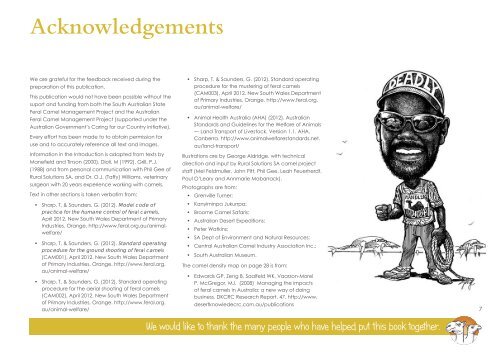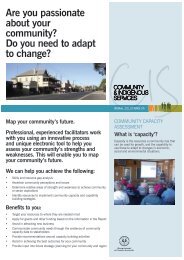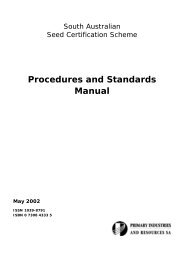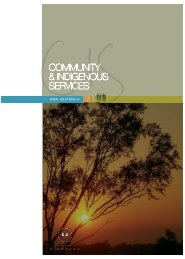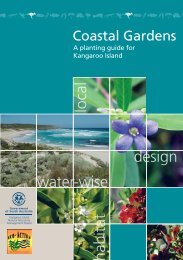Final May 22 Bes Practice Camel Book_web_part1 - Rural Solutions ...
Final May 22 Bes Practice Camel Book_web_part1 - Rural Solutions ...
Final May 22 Bes Practice Camel Book_web_part1 - Rural Solutions ...
- No tags were found...
You also want an ePaper? Increase the reach of your titles
YUMPU automatically turns print PDFs into web optimized ePapers that Google loves.
AcknowledgementsWe are grateful for the feedback received during thepreparation of this publication.This publication would not have been possible without thesuport and funding from both the South Australian StateFeral <strong>Camel</strong> Management Project and the AustralianFeral <strong>Camel</strong> Management Project (supported under theAustralian Government’s Caring for our Country initiative).Every effort has been made to to obtain permission foruse and to accurately reference all text and images.Information in the Introduction is adapted from texts byManefield and Tinson (2000), Dioli, M (1992), Grill, P.J.(1988) and from personal communication with Phil Gee of<strong>Rural</strong> <strong>Solutions</strong> SA, and Dr. O.J. (Taffy) Williams, veterinarysurgeon with 20 years experience working with camels.Text in other sections is taken verbatim from:• Sharp, T. & Saunders, G. (2012). Model code ofpractice for the humane control of feral camels,April 2012. New South Wales Department of PrimaryIndustries, Orange. http://www.feral.org.au/animalwelfare/• Sharp, T. & Saunders, G. (2012). Standard operatingprocedure for the ground shooting of feral camels(CAM001), April 2012. New South Wales Departmentof Primary Industries, Orange. http://www.feral.org.au/animal-welfare/• Sharp, T. & Saunders, G. (2012). Standard operatingprocedure for the aerial shooting of feral camels(CAM002), April 2012. New South Wales Departmentof Primary Industries, Orange. http://www.feral.org.au/animal-welfare/• Sharp, T. & Saunders, G. (2012). Standard operatingprocedure for the mustering of feral camels(CAM003), April 2012. New South Wales Departmentof Primary Industries, Orange. http://www.feral.org.au/animal-welfare/• Animal Health Australia (AHA) (2012). AustralianStandards and Guidelines for the Welfare of Animals— Land Transport of Livestock. Version 1.1. AHA,Canberra. http://www.animalwelfarestandards.net.au/land-transport/Illustrations are by George Aldridge, with technicaldirection and input by <strong>Rural</strong> <strong>Solutions</strong> SA camel projectstaff (Mel Feldmuller, John Pitt, Phil Gee, Leah Feuerherdt,Paul O’Leary and Annmarie Mabarrack).Photographs are from:• Grenville Turner;• Kanyirninpa Jukurrpa;• Broome <strong>Camel</strong> Safaris;• Australian Desert Expeditions;• Peter Watkins;• SA Dept of Environment and Natural Resources;• Central Australian <strong>Camel</strong> Industry Association Inc.;• South Australian Museum.The camel density map on page 28 is from:• Edwards GP, Zeng B, Saalfeld WK, Vaarzon-MorelP, McGregor, MJ. (2008) Managing the impactsof feral camels in Australia: a new way of doingbusiness. DKCRC Research Report. 47. http://www.desertknowledecrc.com.au/publications7We would like to thank the many people who have helped put this book together.


